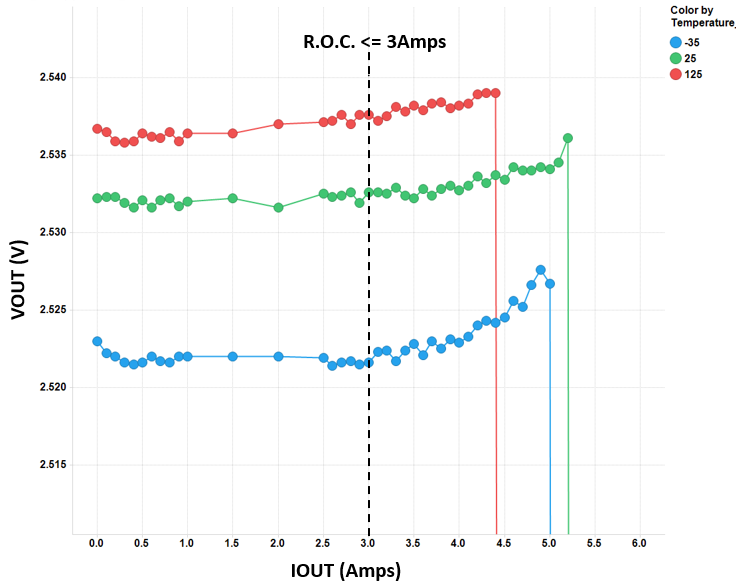SLVUBI1 May 2021
4.1 Output Voltage Regulation
- Turn on the input DC source (5 V)
- Turn on the e-load and sweep the load current from
0 A to 3 A, or higher to observe the margin the device has to the recommended
operating condition of 3-A maximum. The monitored output voltage at TP17 (VOUT)
is at or near 2.5 V across the entire current load sweep as shown in Figure 4-1.
 Figure 4-1 Output Voltage
Regulation
Figure 4-1 Output Voltage
Regulation